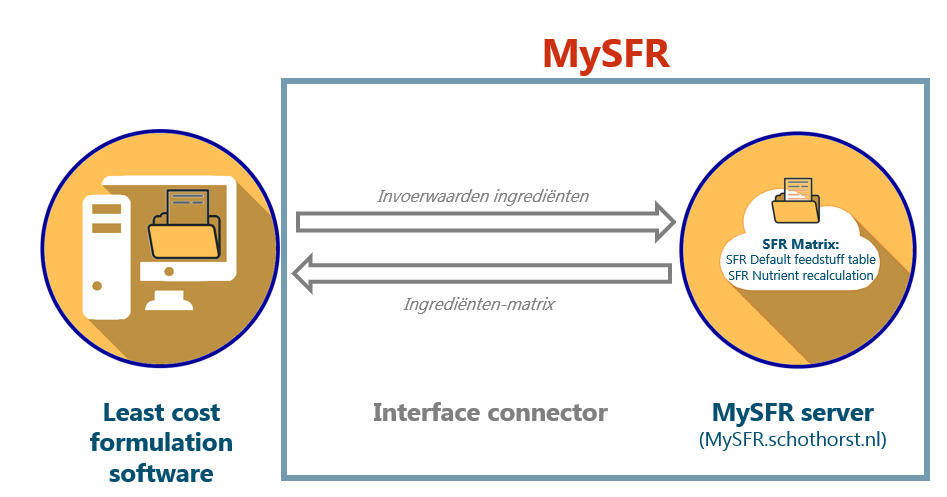MySFR calculates millionth raw material
MySFR, SFR’s raw material matrix, calculated the millionth raw material this week. Customers from all over the world use this matrix to calculate current nutrient value calculations for more than 450 raw materials.
MySFR has now been around for 7 years and its use has increased considerably in recent years. Nico Kanis, manager of MySFR: “At the end of 2018 we had the 100,000th calculation and in May 2020 we celebrated the 200,000th calculation. In recent years, the use of the matrix has really exploded worldwide.”

The almost 100 MySFR customers, this number is still growing steadily and are largely compound feed (companies) producers and integrations, can load the data from the MySFR matrix into their own feed optimization program. Before MySFR existed, this was done with a floppy disk, CD-ROM or memory stick, now via the cloud. The data is renewed/updated twice a year based on (own) research at our own company in Lelystad.
More than 450 raw materials
The system contains data for 450 raw materials and that number is still growing. “Because MySFR is also increasingly used in Asia, we have also added more exotic raw materials,” says Nico. “Traditionally, concentrate raw materials were mainly calculated. (The majority of the calculations concern silages and other roughage, but our customers, compound feed producers, are also eager to calculate concentrate feed raw materials.) For a number of years, several ration optimization programs for ruminants and lab analysis databases have also been linked to MySFR, (since then) and we see an increase in calculations with (a shift in calculations from concentrate feed raw materials to) roughage and residual flows.”
Energy rating system
The energy valuation of raw materials for the various animal categories is largely based on energy systems developed and maintained by SFR. (and adjusted if necessary.) By predicting the energy values as accurately as possible on the basis of the researched, validated digestion coefficients, feeding can be done as efficiently as possible, both nutritionally and economically, for any given feed intake of the animal.